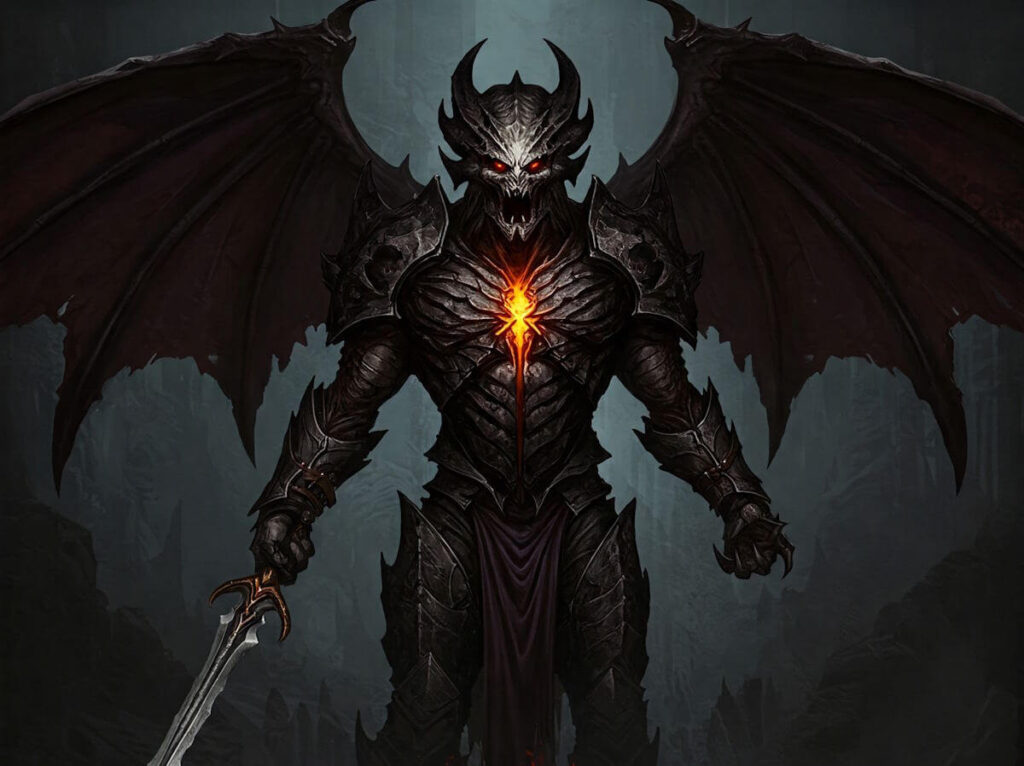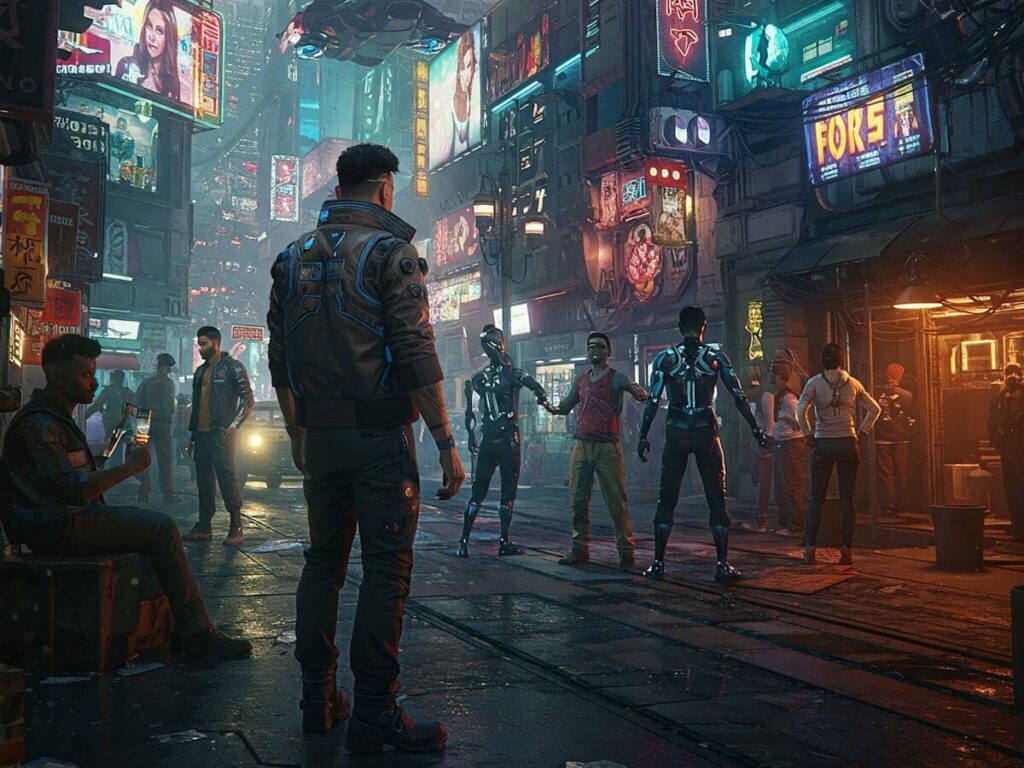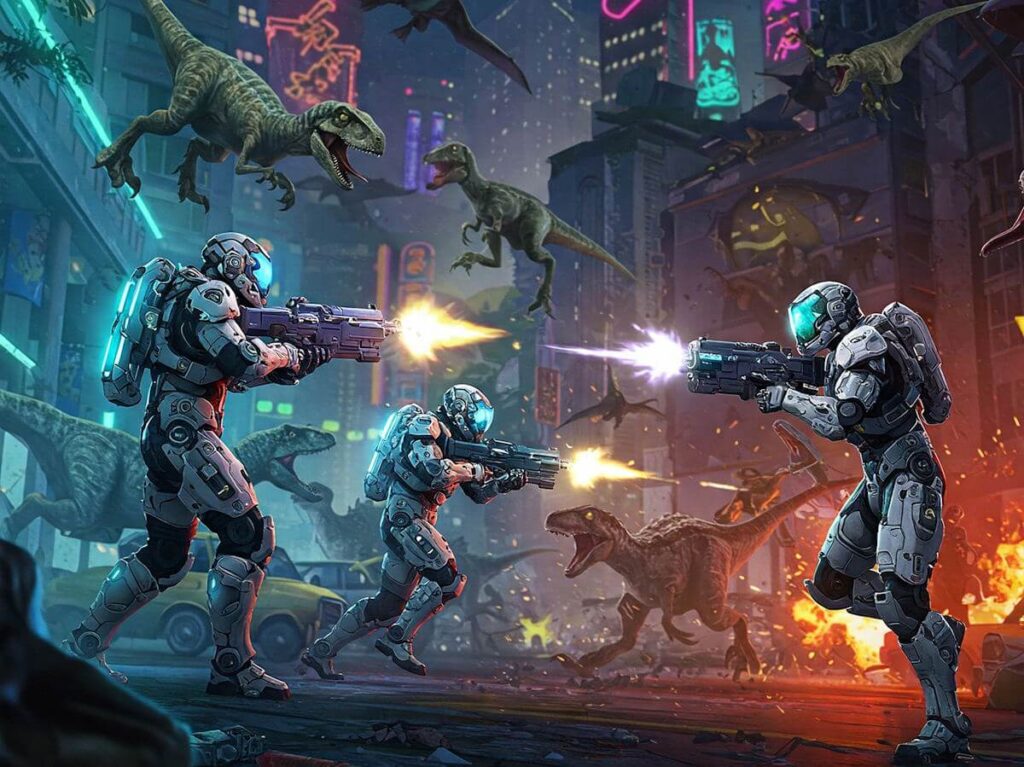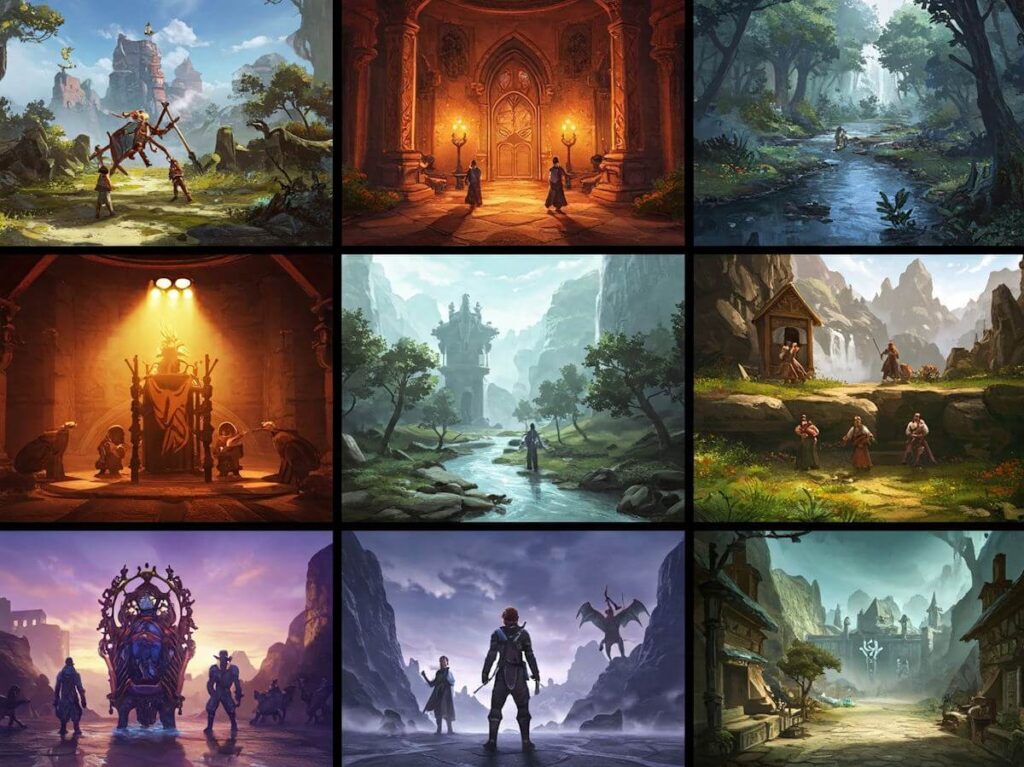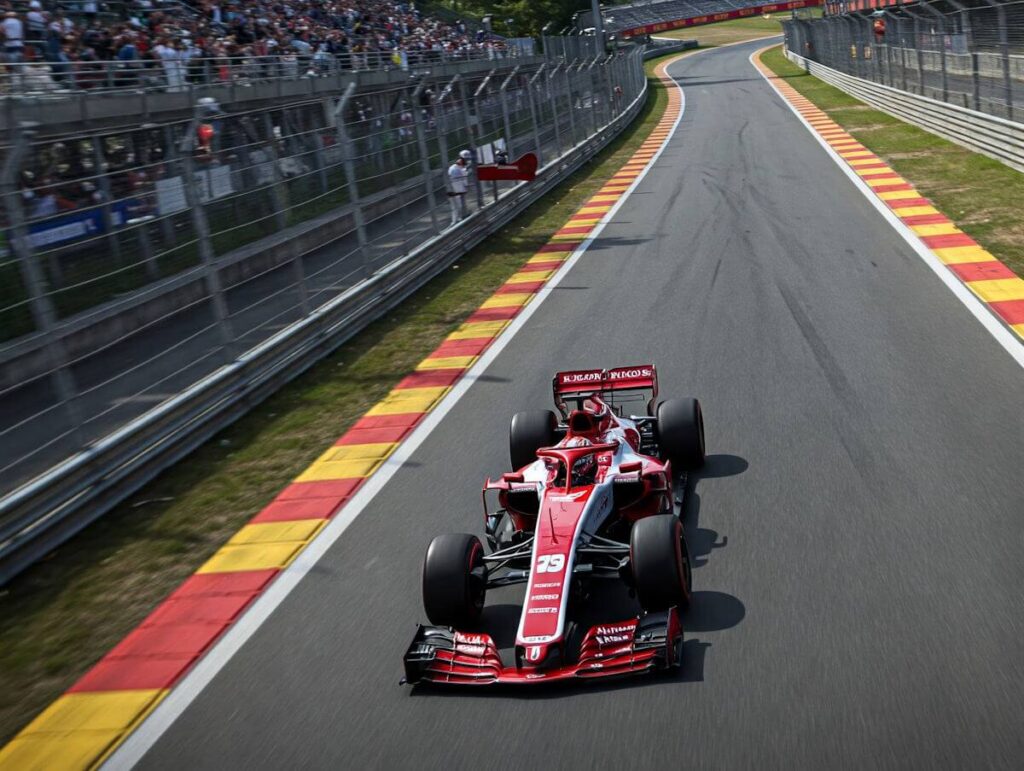The Legacy of Diablo
The Diablo franchise originated in 1996 with the release of the first title, developed by Blizzard Entertainment. This action role-playing game (ARPG) distinguished itself with its dark fantasy theme, immersive storytelling, and innovative gameplay mechanics, setting a new standard in the genre. Players traversed dungeons, battling hordes of demons while collecting loot and upgrading their characters, a format that has become a foundational template for many subsequent titles in the action RPG space.
The narrative arcs that follow the eternal conflict between the forces of Heaven and Hell have captivated millions of players worldwide. Each installment has expanded upon the lore, introducing complex characters and intricate storylines that deepen the universe. Diablo II, released in 2000, is often hailed as one of the best games of all time due to its gameplay refinement and expansion of the story, which solidified the franchise’s stature. The subsequent release of Diablo III further pushed boundaries with its dynamic gameplay and an evolving online structure that included seasonal content, attracting both new players and veterans alike.
Key elements have remained constant throughout the series, contributing to its enduring legacy. The iconic dark aesthetic, paired with memorable character classes such as the Barbarian and Sorceress, continues to resonate with fans. Moreover, the incorporation of cooperative multiplayer gameplay has fostered a sense of community among players, enhancing the shared experience of battling the forces of evil. Additionally, the franchise has adeptly evolved with advances in technology and gamer expectations, thus maintaining its relevance in an ever-changing industry.
As we look forward to the latest iteration with Diablo IV, the franchise’s deep roots in gaming history and its commitment to innovative gameplay reaffirm its lasting legacy and influence on the action RPG genre. With its rich narrative and foundational mechanics, the Diablo series remains a hallmark of video game design and storytelling.
A Darker World Awaits
The anticipation surrounding the release of Diablo IV is largely due to the significant shift towards a darker, more immersive atmosphere compared to its predecessors. In this latest installment, the developers have crafted a game world that embodies themes of despair, decay, and hardship, marking a return to the franchise’s roots where darkness reigns. The visual elements play a crucial role in this transformation, with a distinct color palette that evokes a sense of foreboding. The developers have intentionally employed muted tones and deep shadows, contrasting sharply with the vibrant colors that characterized earlier versions. This shift not only enhances the ambiance but also amplifies the emotional weight of the narrative.
Furthermore, the environmental details within Diablo IV have been meticulously designed to evoke a profound sense of place. Each location is infused with elements that tell a story of their own—abandoned villages, ominous forests, and sinister dungeons contribute to the overall tapestry of a world ravaged by evil forces. This attention to detail adds layers to the gaming experience, immersing players in a setting where every corner harbors potential threats and ancient secrets. The use of atmospheric sound design complements the visual experience, with eerie soundscapes and impactful audio cues that heighten the tension as players navigate through treacherous terrains.
The darker themes explored in Diablo IV extend beyond mere aesthetics, as they influence gameplay mechanics and narrative arcs as well. Characters encounter moral dilemmas and face consequences for their choices, enhancing the overall depth of the storyline. This interplay between dark visuals and complex narratives creates an immersive experience, inviting players to engage with the world on a deeper level. The cohesive blend of these elements ensures that Diablo IV not only revisits its origins but elevates the franchise to new heights, promising a more profound journey into the heart of darkness.
Storyline Overview
Diablo IV returns players to the dark and immersive world of Sanctuary, where an ancient evil threatens to restore chaos and death. Set in the aftermath of Diablo III, the storyline centers around the resurrection of Lilith, the Daughter of Hatred, who seeks to reclaim dominion over humanity. This reincarnation serves as a pivotal point in the narrative, intertwining the fates of various characters in a battle between light and darkness.
Players traverse the treacherous realms of Sanctuary, which is steeped in dark folklore and terrifying landscapes. The game’s narrative intricately weaves together the lives of the main protagonist and significant figures such as the Horadrim, a group of scholars and warriors dedicated to protecting humanity from demonic forces. Their journey is marked not only by external confrontations with demonic entities but also by internal struggles, as the characters grapple with their pasts and motivations.
Amidst the chaos, alliances form and conflict arises, leading to dynamic character arcs. Players will encounter classic characters from previous installments, enriched with new depths and challenges. One of the key thematic elements of Diablo IV is the moral ambiguity that permeates the story, as characters must navigate complex decisions that blur the lines between good and evil. As players progress, they will uncover lore that deepens their understanding of the world, including the history surrounding Lilith and her connection to Sanctuary.
Ultimately, Diablo IV aims to create an engaging experience that invites both veteran players and newcomers to delve into its rich narrative tapestry. From engaging quests to darkly atmospheric storytelling, the game offers a compelling journey through the turmoil of Sanctuary, highlighting the ever-present struggle against overwhelming darkness. This storyline overview sets the foundation for what players can expect as they join the battle against Lilith and her abyssal forces.
Character Development and Classes
In the highly anticipated release of Diablo IV, players can expect a rich tapestry of character customization and development options that breathe new life into the franchise. At the forefront of this experience are the various character classes that embody the essence of Diablo’s dark universe. Each class, from the seasoned Barbarian to the mystical Sorceress, offers unique attributes, playstyles, and abilities, allowing players to tailor their gameplay experience to align with their preferences.
Character customization goes beyond merely selecting a class; it extends into the realm of skill trees and specialized abilities. Each character class has a distinct skill tree that branches out into various paths, enabling players to invest points into specific abilities as they level up. This flexible system encourages experimentation, allowing players to create hybrid builds that can enhance their combat efficiency or bolster survivability, depending on the challenges they face in the ruthless landscapes of Sanctuary.
The depth of character development in Diablo IV is further amplified by the inclusion of unique abilities, which are tailored to each class. For instance, the Druid can harness the powers of nature, shapeshifting into formidable forms, while the Rogue utilizes agility and cunning to overwhelm enemies with precision strikes. The strategic combination of such abilities, coupled with an evolving skill tree, provides a rewarding sense of progression and personal investment in one’s character.
Moreover, the visual representation of characters can be customized through various cosmetic options, enhancing immersion in the storyline. The extensive character development process ensures not only a unique gameplay experience for each player but also a profound attachment to their chosen hero, embodying the struggle against the ever-looming darkness of Diablo’s world.
The Sanctuary: A Living World
In Diablo IV, the world of Sanctuary offers players an expansive and richly detailed environment, where each locale is crafted to immerse players deeply in the lore and aesthetics of the game. The open-world design allows players to explore various regions filled with unique characteristics and challenges. Unlike previous installments, this iteration boasts dynamic environments that respond to player actions, creating a sense of an evolving world that feels alive.
As players traverse through iconic locations such as Scosglen, Dry Steppes, and the Hawezar, they will encounter significant landmarks that shape their journey and the narrative arc of the game. Each region is intricately designed with environmental storytelling, ensuring that every corner of the Sanctuary offers something new to discover. For instance, Scosglen’s lush forests contrast sharply with the harsh, arid landscapes of the Dry Steppes, each presenting unique quests and challenges that enhance player engagement.
Moreover, player choices in Diablo IV carry substantial weight, as actions taken during quests can influence the development of the environment. Engaging in dynamic events, making moral decisions, and completing various objectives can lead to lasting changes within the Sanctuary. This feature not only provides replayability but also fosters a deeper connection between the player and the world surrounding them.
This living world concept is pivotal in creating an immersive experience, where players can witness the ramifications of their choices manifesting in the world around them. With each decision, players contribute to the narrative tapestry of Sanctuary, thus enhancing the emotional depth of the game. Overall, Diablo IV not only challenges players in combat but also invites them to forge a personal link with a world that evolves alongside their journey.
Multiplayer Features and Engagement
Diablo IV resurrects the franchise’s beloved multiplayer dynamics, offering players an engaging environment to interact and collaborate. In this installment, cooperative gameplay is at the forefront, allowing friends and strangers alike to band together, tackling challenging quests and formidable foes in real-time. This focus on cooperation enriches the gaming experience, promoting teamwork and strategy among players. By joining forces, adventurers can utilize their unique skills and classes to complement one another, fostering a sense of accomplishment that is particularly rewarding in a shared virtual space.
Furthermore, the game introduces various player-versus-player (PvP) elements that encourage healthy competition. Designated PvP zones allow players to engage with one another in battles, testing their skills and strategies against fellow players. This feature not only enhances rivalry but also encourages players to hone their abilities, as they strive to emerge victorious in these fierce encounters. PvP engagement adds an exciting layer to Diablo IV, seamlessly blending cooperative elements with competitive thrills.
Community interaction is another cornerstone of Diablo IV’s multiplayer experience. Players can form communities, join clans, and engage in in-game events that celebrate their shared passion for the game. These social features cultivate a robust sense of belonging, allowing players to connect over shared achievements and challenges. Through social interactions, players are likely to develop friendships that transcend the digital realm, creating lasting bonds forged in the heat of battle. Overall, the multiplayer aspects of Diablo IV not only enhance individual gameplay but also create an immersive and vibrant community that makes the experience truly enriching.
Endgame Content and Replayability
After completing the main storyline of Diablo IV, players can look forward to an array of engaging endgame content designed to enhance replayability and keep the excitement alive. One of the prominent features is the extensive dungeon crawling experience. Diablo IV offers players a multitude of dungeons to explore, each with unique layouts, enemies, and treasure. These dungeons are not only a test of skill but also provide opportunities for players to acquire better loot and character enhancements. The randomly generated elements within these dungeons ensure that no two runs feel the same, encouraging players to return and conquer them repeatedly.
Seasonal events play a significant role in the post-campaign experience, introducing fresh content and limited-time challenges that align with the game’s rich lore. Each season brings unique quests, mechanics, and rewards, allowing players to engage with the game world in different ways. These events are designed to appeal to both seasoned veterans and new players alike, ensuring accessibility while challenging participants to earn exclusive rewards. The dynamic nature of seasonal content keeps the community engaged and provides a sense of urgency to participate in time-sensitive activities.
Moreover, players can expect various new challenges that will test their strategies and deepen their gameplay experience. From world bosses that necessitate large group coordination to intricate puzzles hidden within dungeons, these challenges ensure that players have ample reasons to revisit the game. The introduction of innovative mechanics and seasonal updates encourages players to experiment with different builds and character customization, further enhancing the long-term appeal of Diablo IV.
In conclusion, the wealth of endgame content and the promise of replayability in Diablo IV stand as a testament to the game’s design. Players are not only offered the chance to continue their journey beyond the main storyline but are also encouraged to forge their path through the rich, evolving world of Sanctuary.
Comparative Analysis: Diablo IV vs. Previous Installments
Diablo IV marks a significant evolution in the franchise, reflecting both advancements and the enduring legacy of earlier installments. When comparing Diablo IV with its predecessors, one can immediately notice the enhanced graphics. The visual fidelity of Diablo IV is a remarkable leap, featuring a more realistic art style that immerses players in its dark and gritty world. The use of advanced lighting and shadowing techniques creates a haunting atmosphere that aligns with the franchise’s gothic themes, setting a new standard for subsequent action role-playing games.
In addition to its graphical improvements, Diablo IV introduces refined mechanics that cater to both veteran players and newcomers. The inclusion of an open-world format allows for a more fluid exploration of Sanctuary, contrasting with the more linear design of earlier titles. Players now have the freedom to choose their path, engage in events, and participate in dynamic world content. This flexibility in gameplay enhances player agency, a shift that many fans appreciate, as it encourages a more personalized approach to character development and quest completion.
Storytelling also undergoes a transformative upgrade in Diablo IV. While previous installments laid the groundwork for the series’ lore, the narrative in Diablo IV is more intricate and mature. The game delves deeper into its characters and their motivations, presenting a more cohesive and engaging story. This evolution is a homage to the rich narratives that made the earlier titles beloved, while simultaneously offering a fresh take that resonates with contemporary audiences. The balance between honoring the past and innovating for the future exemplifies Diablo IV’s commitment to maintaining the essence of its roots, while carving out its own identity.
Community Reactions and Expectations
The anticipation surrounding the release of Diablo IV has generated a substantial amount of discussion within the gaming community. As dedicated fans and newcomers alike eagerly await the game, their responses reflect a mix of excitement, skepticism, and high expectations. The beta testing phase of Diablo IV offered a glimpse into the game, allowing players to explore the immersive world and its mechanics, which led to varied feedback from participants.
Many players praised the game for its stunning graphics, atmospheric design, and the return to darker themes reminiscent of earlier installments. Notably, the update on character customization and engaging combat mechanics has received favorable reviews, highlighting a successful blend of classic Diablo elements with modern RPG features. Players have expressed a desire for a robust multiplayer experience, seeking a balance between cooperative play and an enriching solo journey.
Conversely, there are concerns regarding the potential for microtransactions and how they might affect the game’s overall experience. Some community members worry that these elements could detract from the immersive experience that the Diablo franchise is known for. This hesitancy reflects a broader dialogue regarding the monetization strategies employed by contemporary games, as players hope for a fair approach that respects their investment of both time and money.
Overall, the community’s expectations for future expansions are also noteworthy. Players are vocal about their desire for continuous updates that offer new content and challenges. This engagement indicates a strong commitment to the Diablo universe, as many hope that Blizzard will build on the foundation established with the base game. As the release date draws closer, the excitement continues to grow, with many looking forward to experiencing the depth and darkness that Diablo IV promises to deliver.

